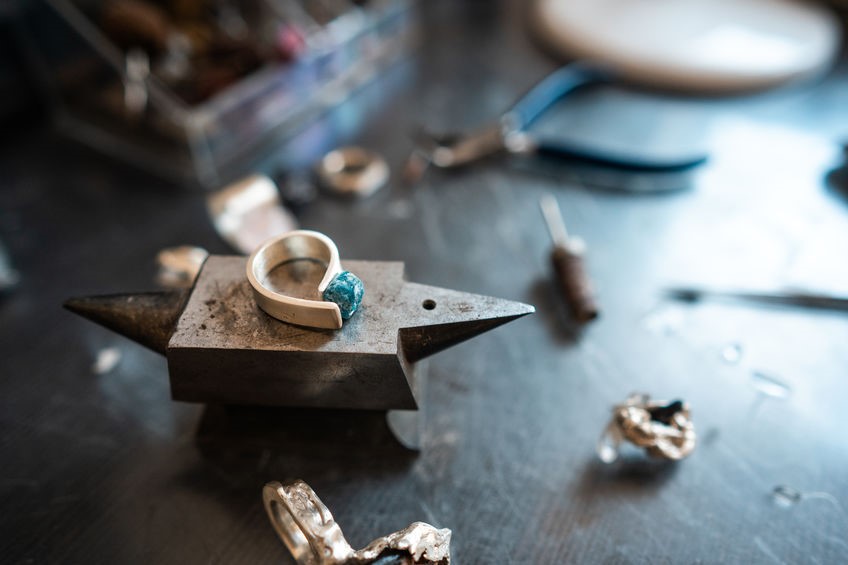Metal Comparison
Moh's Scale of Hardness Chart

Have you ever wondered how tungsten carbide stacks up against titanium and other materials commonly used to make men’s wedding bands? Which is better, tungsten or titanium? Below is the Mohs Scale of Mineral Hardness, a qualitative ordinal scale of mineral hardness or scratch resistance, based on the ability of one mineral sample to visibly scratch another mineral sample.
 The Mohs Scale below includes common materials used in the jewelry business. To give you a better picture of the hardness of these materials, we included fingernail and tooth on the scale for comparison.
The Mohs Scale below includes common materials used in the jewelry business. To give you a better picture of the hardness of these materials, we included fingernail and tooth on the scale for comparison.
As you can see, diamonds get a perfect “10” for being the hardest and most scratch-resistant material on earth, which means nothing can scratch it except another diamond. Tungsten is the hardest and most scratch-resistant metal, but nonmetals such as diamonds, sapphires and other hard crystals can still scratch it. If you’re thinking titanium, bear in mind that it’s far less scratch-resistant than tungsten.
Often, materials on the lower part of the Mohs Scale can create tiny dislocations on materials higher up on the scale. But even though these microscopic dislocations are permanent and sometimes even disruptive to the harder material's physical structure, they aren’t regarded as scratches according to the Mohs Scale determination of hardness.

Choosing the Perfect Metal for Your Wedding Band
When it comes to choosing the perfect metal for your wedding band, the decision basically comes down to the qualities you are looking for in that metal. Most people want a durable metal that won’t scratch easily or look worn, like tungsten or ceramic rings. Some favor a certain color — for instance, a light-colored metal such as palladium, versus a dark one like black zirconium. Others prefer metals with a high retail value, like platinum or gold.

The chart below is a comparison of metals based on the most common criteria important to couples choosing a metal for their wedding bands. In addition, underneath the chart we've listed the biggest advantages and disadvantages of each type of metal.
Pros and Cons of Metals
 Tungsten
Tungsten
Pros: Most scratch-resistant metal and very affordably priced. Very easy to remove in case of medical emergency — no cutting or sawing. Hypoallergenic
Cons: Not naturally as white as platinum. Due to its hardness, it doesn’t bend, but instead breaks if enough force is applied.
Ceramic
Pros: Equally as scratch-resistant as tungsten. The black color is not plating as in black tungsten, so it doesn’t scratch off. Ceramic won’t set off metal detectors. Hypoallergenic.
Cons: Due to its hardness, it doesn’t bend, but breaks instead if enough force is applied.
Cobalt Chrome
Pros: Has a popular light color. It exhibits better scratch resistance than titanium. Doesn’t crack under pressure. Hypoallergenic
Cons: Scratches more easily than tungsten. In an emergency medical situation, it must be sawed off.
Titanium
Pros: Has a high precious-metal content and is nearly as white as platinum. More affordable than platinum or gold rings. Exhibits better scratch-resistance than platinum, silver or gold. Hypoallergenic.
Cons: Not as white as platinum. It is more difficult to cast than gold and platinum.
Platinum
Pros: Most luxurious metal. Popular due to its very white color. Hypoallergenic.
Cons: Most expensive metal. It scratches more easily than palladium.
Silver
Pros: Least expensive precious metal. The very white color is popular. Hypoallergenic.
Cons: Tarnishes, but can be cleaned at home. Not very scratch-resistant (it is only more scratch-resistant than gold).
Gold
Pros: Scratches easily. Expensive. In the case of white gold, this is plating that scratches off and needs to be re-plated.
Cons: We hope these metal comparisons are helpful not only in deciding on the metal you’d like for your wedding bands, but to choose any type of jewelry for yourself or someone else.



